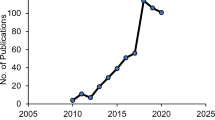Abstract
The electrical resistivity method was used for measuring the electrical resistivity of cement paste incorporating with fly ash. The study found that the bulk electrical resistivity ρ(t) was a function of the solution electrical resistivity ρ0(t) and porosity Φ. A two-component model was proposed, in which ρ(t) was dominated by ρ0(t) at the early period of hydration and dominated by Φ at a later period. The porosity formation curve was derived from the 2-point method. A logarithmic equation ρ(t)=K*In(t/t0) was proposed to express the electrical resistivity development with time after hardening, where K represents the rate of hydration, and the pastes with fly ash had a lower K. The setting times and compressive strengths were tested and the results were compared with the electrical properties.
Résumé
La méthode de résistivité électrique est utilisée pour mesurver la résistivité électrique du ciment Portland additionné de cendres volantes. L'étude montre que la résistivité électrique ρ(t) est une fonction de la résistivité électrique de la solution ρ0(t) et de la porosité Φ. Un modèle de deux composants a été proposé. ρ(t) est gouvernée par ρ0(t) au début de l'hydratation et par Φ en fin d'hydratation. La courbe de formation de porosité a été dérivée de la méthode de 2 points. Une équation de type logarithmique, ρ(t)=K*In(t/t0) est propose pour décrire l'évolution de la résistivité électrique en fonction du temps après durcissement et où K représente le taux d'hydratation. Les pâtes de ciment additionné de cendres volantes présentent un faible taux d'hydratation K. Le temps de prise et la résistance à la compression sont identifiés et comparés aux proprietés électriques de ces pâtes.
Similar content being viewed by others
References
ASTM C 618, ‘Fly Ash and Raw or Calcined Natural Pozzolan for Use as a Mineral Admixture in Portland Cement Concrete’, 1985.
ASTM C 593, ‘Standard Specification for Fly Ash and Other Pozzolans for use with Lime’, 1985.
Marsh, B.K. and Day, R.L., ‘Pozzolanic and cementitious reactions of fly ash blended cement pastes’,Cement and Concrete Research 18(2) (1988) 301–310.
Tashiro, C., Ikeda, K. and Inome, Y., ‘Evaluation of pozzolanic activity by the electric resistance measurement method’,Cement and Concrete Research 24(6) (1994) 1133–1139.
Paya, J.,ea el., ‘Enhanced conductivity measurement techniques for evaluation of fly ash pozzolantic activity’,Cement and Concrete Research 31(1) (2001), 41–49.
McCarter, W.J. and Ezirim, H.C., ‘Monitoring the early hydration of pozzolan-Ca(OH)2 mixtures using electrical methods’,Advance in Cement Research 10(4) (1998) 161–168.
Gu, P.,et al., ‘Microstructural characterization of cementitious materials: conductivity and impedance methods’, in: Skalny, J.P. and Mindess, S. (eds), ‘Materials Sciences of Concrete’ (The American Ceramic Society, Ohio, 1985).
Christensen, B.J., Mason, Th.O. and Jennings, H.M., ‘Influence of silica fume on the early hydration of Portland cements using impedance spectroscopy,’J. Am. Ceram. Soc. 75(4) (88) (1992) 939–945.
Garboczi, E.J., ‘Diffusivity, permeability, and microstructural aarameters: a critical review,’Cement and Concrete Research 20 (1990) 591–603.
McCarter, W.J. and Tran, D., ‘Monitoring pozzolanic acitity by direct activation with calcium hydroxide,’Construction and building materials 10(3) (1996) 179–184.
McCarter, W.J., Starrs, G. and Chrisp, T.M., ‘Electrical conductivity, diffusion, and permeability of Portland cementbased mortars’,Cement and Concrete Research 30 (9) (2000) 1395–1400.
Whittington, H.W., McCater, M.J. and Forde, M.C., ‘The conduction of electricity through concrete’,Magazine of Concrete Research 33(114) (1981) 48–60.
Gu, P.,Xie, P., Beaudoin, J.J. and Brousseau, R., ‘A.C. impedance spectroscopy (I): A new equivalent circuit model for hydrated Portland cement paste’,Cement Concrete Research 22(5) (1992) 833–840.
Gu, P., Xie, P., Beaudoin, J.J. and Brousseau, R., ‘A.C. impedance spectroscopy (II): Microstructural characterization of hydrating cement-silica fume systems’,Cement Concrete Research 23(1) (1993) 157–168.
Xie, P., Gu, P., Xu, Z. and Beaudoin, J.J., ‘A rationalized A.C. impedence model for microstructural characterization of hydrating cement systems’,Cement Concrete Research 23(2) (1993) 359–367.
Coverdale, R.T., Christensen, B.J., Mason, T.O., Jennings, H.M., Garboczi, E.J. and Bentz, D.P., ‘Interpretation of the impedance spectroscopy of cement paste via computer modelling 1: Bulk conductivity and offset resistance,’J. Mater. Sci. 30 (1995) 712–719.
Li, Z. and Li, W., ‘Contactless, transformer-based measurement of the resistivity of materials’ [P]. United States Patent 6639401, 2003.
Li, Z., Wei, X. and Li, W., ‘Preliminary interpretation of hydration process of Portland cement using resistivity measurement’,ACI Materials Journal 100(3)(2003) 253–257.
Li, Z. and Wei, X., ‘The electrical resistivity of cement paste incorporated with retarder’,Journal of Wuhan University of Technology, Materials Science Edition 18(3) (2003) 76–78.
Lide, D.R. (ed), ‘Handbook of Chemistry and Physics’, 73rd edition (CRC Press, Cleveland, Ohio, 1992) 5–107.
Buenfeld, N.R. and Newman, J.B., ‘Examination of three methods for studying ion diffusion in cement pastes, mortars and concrete’,Mater. Struct. 20 (1987) 3–10.
Lea, F.M. (ed), ‘Lea's Chemistry of Cement and Concrete’, 4th Edition (Arnold, London, 1998) 524–534.
Gartner, E.M., Young, E.M., Damidot, D.A. and Jawed, I., ‘Hydration of Portland cement’, in: Bensted, J. and Barnes, P. (eds), ‘Structure and Performance of Cements’ (Spon Press, London, 2002) 83–84.
Wei, X., ‘Interpretation of hydration process of cement-based materials using electrical resistivity measurement’, PhD. Thesis of Hong Kong University of Science and Technology, 2004.
Archie, G.E., ‘The electrical resistivity log as an aid in determining some reservoir characteristics’,Transactions of the American Institute of Mining. Metallurgical, and Petroleum Engineers (146) (1942) 54–62.
Author information
Authors and Affiliations
Rights and permissions
About this article
Cite this article
Wei, X., Li, Z. Study on hydration of Portland cement with fly ash using electrical measurement. Mat. Struct. 38, 411–417 (2005). https://doi.org/10.1007/BF02479309
Received:
Accepted:
Issue Date:
DOI: https://doi.org/10.1007/BF02479309




